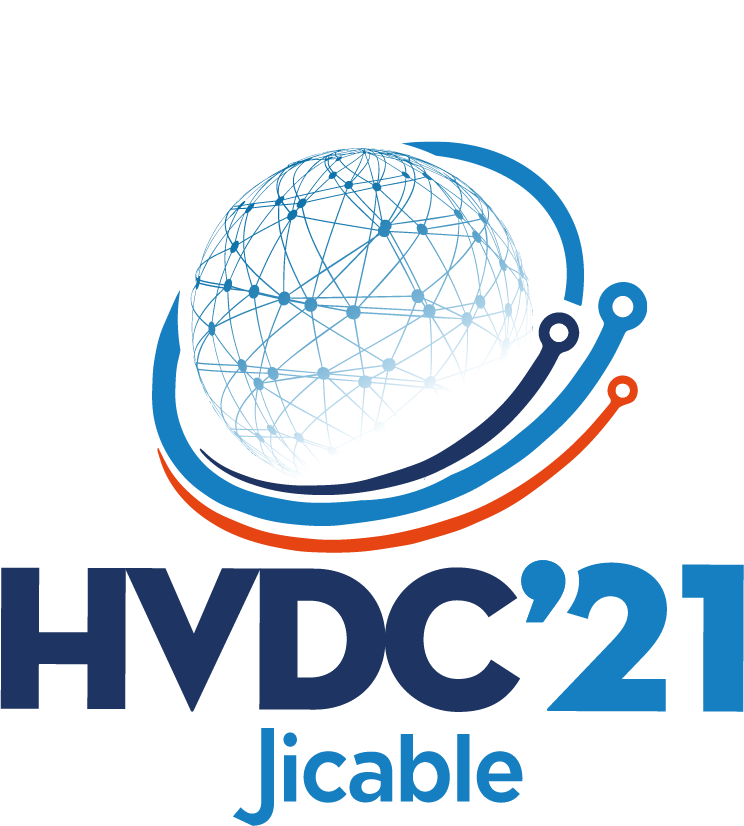SuperGrid Institute’s experts are ready for Jicable HVDC’21!

Jicable is an international conference aimed at promoting scientific and technical exchanges within the insulated power cables field. In other words: an unmissable event for us! We are thrilled to be back on the road to participate in this 3 day conference in person in Liege, Belgium (November 8th – 10th) with no less than 6 appearances in the programme. Make sure you don’t miss any of our contributions by reading up on our participation here!
Jicable HVDC’21 is dedicated to High-Voltage Direct Current transmission systems in which insulated power cables are a key component. The main topics this year include “Conception, design, manufacturing and testing of all types of HVDC cables and accessories”, “European and worldwide onshore and offshore projects” and “Prospective use of MVDC cable systems vs HVDC cable systems”. Our experts are contributing to several sessions in order to share SuperGrid Institute’s knowledge and latest news!
Tutorials
On Monday the 8th of November, G. Teyssedre, from Toulouse University and Petru Notingher, IES Montpellier will give a tutorial on “Scientific challenges and threats in the HVDC transmission systems (cables, accessories, converter devices)” along with Seddik Bacha, Supergrid Architecture & Systems research programme Scientific Director and Scientific Committee Chair of SuperGrid Institute, and Martin Henriksen, HVDC Cable Systems & Junctions’ Programme Director of SuperGrid Institute.
Read the executive summary HERE.
Plenary Session Program
On the 9th of November, Servane HALLER will be the official “rapporteur” for the “Session 1: Conception, design, manufacturing of all types of HVDC cables and accessories/material”. She will have to summarise the discussions which will took place during this session; a well-deserved recognition of our research project manager’s expertise in the field of DC cable systems & insulation material.
The same day, Serge POULLAIN will present our vision of HVDC corridors with his presentation “Solutions for the step-wise development of HVDC-based high power corridors” during session 3: “The different aspects related to the insertion of HVDC cable systems in an existing UHV network”.
Abstract:
High power corridors (HPC) are expected to be required to integrate and transmit the increasingly installed offshore power from renewable sources. High voltage direct current (HVDC) is seen as the technology to implement those HPCs stretching long distances. First, this paper discusses the need and characteristics of these HPCs. Then, different technical solutions are suggested to further develop the HPCs: upgrading the existing HVDC links, moving into a multi-terminal or meshed architectures, among others. The paper concludes that most of the development will be based on DC cable technology, potentially rising the future DC cable demand.
Ludovic BOYER will follow in session 4 with our publication “On the specificities of Medium Voltage cable systems for DC applications”.
Abstract:
The present paper deals with some of the specificities of DC stresses applied to medium voltage cable systems and highlights the need to take into consideration the influence on the insulation system of leakage current, space charges and specific transients during the development and qualifications stages. Further, it discusses the relevance of system approach vs component approach in the qualification of MVDC cables and accessories.
More info HERE.
Poster session
Maya MOURAD, one of our research engineers working on Cable systems & insulation materials, will present her poster “Study of the electrical properties of HVAC EPDM and HVAC silicone rubber under DC constraint” in relation to Topic 2 of the Poster Sessions. This paper presents the DC characterisation of two elastomeric materials, a key step in the design of an HVDC accessory. DC conductivity, on the full temperature and electric field application range, is a critical characteristic integrated in simulation models. The investigation of space charge behaviour (using the pulsed electroacoustic method PEA) is complementary to DC conductivity measurements as space charges play an important role in charge carrier conduction.
Abstract:
EPDM and Silicone Rubber (SiR) are elastomeric materials used in HVAC cable accessories due to their good mechanical and electrical properties. In this paper one EPDM and one SiR, are characterised for their electrical properties under DC constraint. Bulk DC conductivity and space charge measurements using the pulsed electroacoustic method (PEA) were carried out at different electric fields and temperatures. The electrical behaviour of silicone under DC stress is found to be largely governed by space charges while this effect is more limited for EPDM.
In Topic 4 of the Poster Sessions: “Space charge measurements (interfaces and materials)”, Dr. Mourad JEBLI, one of our former PhD students, will present his poster “Non-intrusive space charge measurement on DC cable using the thermal step method”.
Abstract:
This article presents a technique for non-intrusive measurement of space charge directly in cables using the thermal step method. The principle of the measurement consists of perturbing the electrostatic balance using a thermal step on the dielectric. After applying the thermal step, a displacement current representative of space charges is measured between cable electrodes. Numerical simulations are first presented to design the measurement bench, then the set-up and experimental results are presented and discussed.
Maya MOURAD and Mourad JEBLI have both been selected for the Young Researchers contest and we are very proud!
More info HERE.
This 2021 edition is a hybrid event (in-person and online) allowing you to follow our presentations from everywhere! If you are onsite, we look forward to talking with you during these 3 days of exchanges! Most of our HVDC Cable Systems & Junctions’ team will be there so come along and join us!


